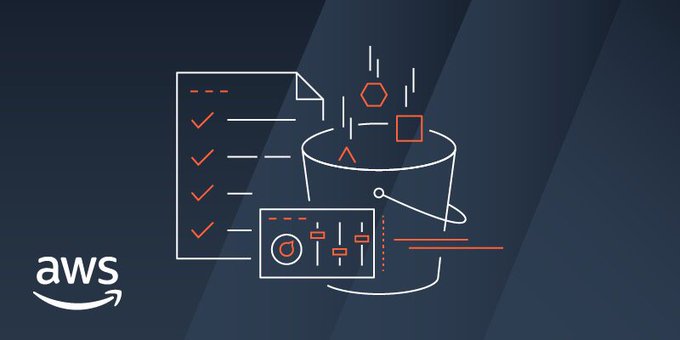AWS Storage Blog
Accelerating Amazon S3 Batch Operations at scale with on-demand manifest generation
Modern enterprises routinely manage billions of objects across their cloud storage environments, needing efficient bulk operations for disaster recovery, compliance management, data transfer, and cost optimization. Performing these operations manually or through custom scripts becomes impractical at scale, often creating operational bottlenecks when time-sensitive actions are necessary. Organizations frequently need to identify and process specific […]
Improve Kubernetes pod scheduling accuracy using Amazon EBS
In the cloud-native landscape, Amazon Elastic Block Store (Amazon EBS) volumes serve as the backbone for persistent storage in containerized applications. As organizations scale their Kubernetes workloads on Amazon Elastic Kubernetes Service (Amazon EKS), they increasingly rely on EBS volumes to provide high-performance, durable storage for stateful applications such as databases, message queues, and data […]
Building self-managed RAG applications with Amazon EKS and Amazon S3 Vectors
Retrieval-Augmented Generation (RAG) is a technique that optimizes large language model (LLM) outputs by referencing authoritative knowledge bases outside of the model’s training data before generating responses. This addresses common limitations of traditional LLMs, such as outdated knowledge, hallucinated facts, and misinterpreted terminology. Organizations can implement RAG to enhance their generative AI applications with current, […]
Enhance your SMB file transfer security with Kerberos and AWS DataSync
Businesses replicate data from on-premises file shares to the cloud to power analytics processes, enable migrations, or free up archival storage. When authenticating to Windows Server Message Block (SMB) file shares, the NTLM protocol has been ubiquitous for decades. However, Microsoft announced its deprecation in 2024. Whether your business operates in a highly regulated industry […]
Simplify cross-account storage management with Amazon EFS and Amazon EKS
Organizations are increasingly adopting a multi-account Amazon Web Services (AWS) strategy to achieve enhanced security, governance, and operational efficiency at scale. Implementing separate accounts for production and non-production environments enables enterprises to group workloads based on business purpose, apply distinct security postures by environments, restrict access to sensitive data, and streamline cost management. You can […]
Boost testing confidence with automated Amazon RDS data replication from production to non-production environment
Automated testing in a pre-production environment is crucial for verifying the reliability and stability of software releases in any organization. However, for many applications, writing and executing these tests necessitates the use of data from production system. This production data is valuable for testing and development because it represents real-world scenarios, usage patterns, and edge […]
Cross-account disaster recovery setup using AWS Elastic Disaster Recovery in secured networks (Part 2: Failover and failback implementation)
This post is the second in a two-part series to provide you with a step-by-step guide on cross-account failover and failback with AWS Elastic Disaster Recovery service. The security of cloud infrastructure is an essential concern for organizations operating in regulated industries or with sensitive workloads. Many users require environments where direct internet access is […]
Cross-account disaster recovery setup using AWS Elastic Disaster Recovery in secured networks (Part 1: Architecture and network setup)
This post is the first in a two-part series to provide you with a step-by-step guide on cross-account failover and failback with Amazon Web Services Elastic Disaster Recovery (DRS). In this first part, we focus on the architecture and network setup needed to build a secure cross-account disaster recovery (DR) solution that maintains network isolation, […]
How Zeta Global scales multi-tenant data ingestion with Amazon S3 Tables
Zeta Global is a data-driven marketing technology company that uses consumer insights to empower brands in customer acquisition, growth, and retention. At the core of its operations is the Zeta Marketing Platform, an advanced system that applies sophisticated AI and machine learning (ML) capabilities on proprietary data from over 245 million U.S. consumer profiles. This […]
Build centralized cross-Region backup architecture with AWS Control Tower
Managing data protection at scale is a critical challenge for the modern enterprise. As organizations grow, their data becomes increasingly distributed, making it difficult to implement consistent backup policies that ensure comprehensive coverage. IT teams must balance competing needs of compliance requirements, resource protection, and operational efficiency – all while struggling to validate and orchestrate […]






